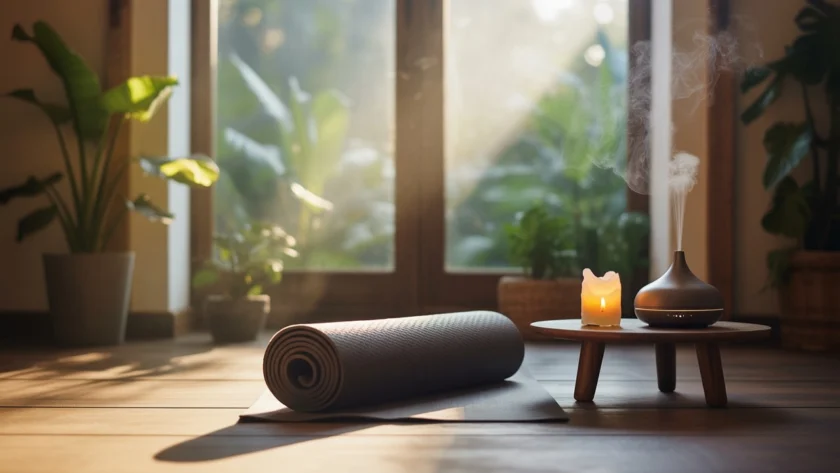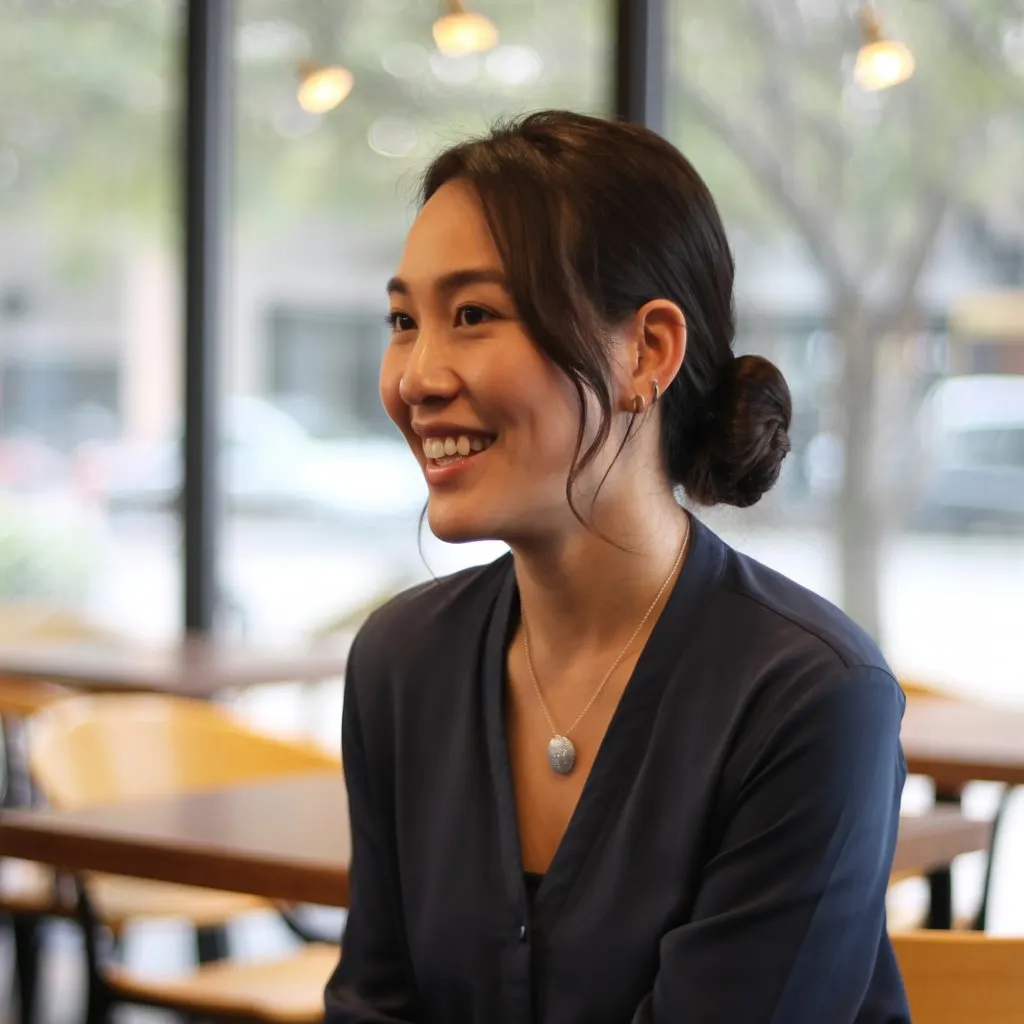I remember the first time someone suggested I try meditation for my anxiety. I was sitting in my therapist’s office, having just described another sleepless night of racing thoughts, and she gently said, “Have you ever considered mindfulness?” My immediate reaction was somewhere between skepticism and mild annoyance. Here I was, barely able to sit still for five minutes without my mind spinning into worst-case scenarios, and she wanted me to meditate?
If you’re reading this with similar doubts, I get it. When you’re dealing with General Anxiety Disorder (GAD), the idea of sitting quietly with your thoughts can feel about as appealing as swimming with sharks. But here’s what I’ve discovered over the years: mindfulness and meditation aren’t about emptying your mind or achieving some zen-like state of perfection. They’re about learning to be present with whatever shows up—including anxiety—and finding God’s peace in the middle of life’s storms.
Understanding GAD and Why Your Mind Won’t Stop
Before we dive into mindfulness techniques, let’s talk about what’s actually happening in your brain when you have General Anxiety Disorder. GAD isn’t just being a “worrier”—it’s a persistent pattern of excessive anxiety about everyday situations that interferes with your daily life. Your mind becomes like a browser with 47 tabs open, each one playing a different worry on repeat.
I used to describe my anxious mind as having a smoke detector that went off every time I made toast. Perfectly normal situations would trigger my internal alarm system, flooding my body with stress hormones and leaving me feeling exhausted and on edge. Sound familiar?
The beautiful thing about mindfulness is that it helps retrain that overactive alarm system. Instead of being at the mercy of every anxious thought, you learn to observe them with the kind of gentle detachment that comes from knowing you are deeply loved by God, regardless of what your mind is telling you.
What Mindfulness Really Means (Spoiler: It’s Not What You Think)
When I first heard about mindfulness, I pictured monks sitting cross-legged for hours in perfect silence. That image was both intimidating and completely unrealistic for my chaotic life. The truth is, mindfulness is simply paying attention to the present moment without judgment. It’s noticing what’s happening right now—in your body, in your thoughts, in your surroundings—without immediately trying to fix or change it.
Think of it this way: if anxiety is like being swept away by a rushing river, mindfulness is like finding a sturdy rock to stand on. You’re still in the river, but you’re no longer being carried away by the current. You can observe the water rushing past without being overwhelmed by it.
From a faith perspective, I’ve come to see mindfulness as a form of stewardship—taking care of the mind and body God has given us. Psalm 46:10 tells us to “be still and know that I am God.” That stillness isn’t about perfection; it’s about creating space to remember whose we are, especially when anxiety tries to convince us otherwise.
Getting Started: Your First Steps into Mindful Living
Here’s what I wish someone had told me when I was starting out: you don’t need to meditate for an hour a day or completely transform your lifestyle. You just need to start where you are, with what you have, for however long feels manageable.
The 3-3-3 Breathing Technique
When anxiety hits and your thoughts start spiraling, try this simple technique I learned from my Christian counselor. It’s based on the idea that our breath is a gift from God—the very life force He breathed into us.
- Notice 3 things you can see around you right now
- Identify 3 sounds you can hear
- Take 3 deep, intentional breaths
As you breathe, you might whisper a simple prayer like “God, I trust you” on the inhale and “Help me find peace” on the exhale. This isn’t about perfect technique—it’s about anchoring yourself in the present moment and remembering you’re not facing this alone.
The Body Scan for Anxious Minds
One of my favorite mindfulness practices is what I call the “gentle body scan.” It’s particularly helpful when GAD has you feeling disconnected from your physical self or when tension has built up in your shoulders, jaw, or stomach.
Start by sitting comfortably (you don’t need a meditation cushion—your kitchen chair works perfectly). Close your eyes or soften your gaze, and begin noticing different parts of your body, starting from the top of your head and moving downward.
The key word here is “notice,” not “judge.” If you discover tension in your shoulders, don’t immediately try to relax them. Just acknowledge: “Oh, there’s tightness here.” Sometimes I’ll even say a quiet “thank you” to that part of my body for carrying stress so I could keep going through my day.
This practice has taught me that my body often knows I’m anxious before my mind catches up. By tuning in regularly, I can address anxiety earlier instead of waiting until I’m in full panic mode.
Biblical Meditation: Where Faith Meets Mindfulness
One of the most meaningful ways I’ve learned to practice mindfulness is through biblical meditation. This isn’t New Age spirituality—it’s an ancient Christian practice of slowly, thoughtfully engaging with God’s Word.
Choose a short verse or phrase that speaks to your anxiety. Some of my favorites include:
- “Cast all your anxiety on him because he cares for you” (1 Peter 5:7)
- “Peace I leave with you; my peace I give you” (John 14:27)
- “The Lord your God is with you, the Mighty Warrior who saves” (Zephaniah 3:17)
Instead of rushing through the verse, sit with it. Repeat it slowly several times. Notice which words stand out to you. Sometimes I’ll focus on just one word—like “peace” or “with”—and let it settle into my heart.
This kind of meditation has become my anchor on difficult days. When anxiety tries to tell me I’m alone or forgotten, these truths remind me of what’s really real.
Mindful Daily Practices That Actually Fit Real Life
The most effective mindfulness practices are the ones you’ll actually do. Here are some realistic ways to weave mindfulness into your everyday routine:
Mindful Morning Coffee (or Tea)
Instead of scrolling through your phone while you drink your morning coffee, try making it a mindful ritual. Feel the warmth of the mug in your hands. Notice the aroma. Take slow, intentional sips. This simple practice can set a calmer tone for your entire day.
I often use this time for a brief morning prayer, thanking God for rest and asking for peace as I face whatever the day brings. It’s become my favorite five minutes of the day.
The Red Light Reset
Traffic lights are built-in mindfulness cues. Instead of getting frustrated at red lights, use them as reminders to take three deep breaths and check in with yourself. How are you feeling right now? What does your body need? Is there tension you can release?
Mindful Walking
You don’t need to hike in the mountains to practice walking meditation. Even walking from your car to the grocery store can become a mindfulness opportunity. Feel your feet touching the ground. Notice the temperature of the air on your skin. This is especially helpful when you’re feeling disconnected or “in your head.”
When Meditation Feels Impossible: Working with Anxious Thoughts
Here’s something important I learned the hard way: mindfulness doesn’t mean your anxious thoughts will disappear. In fact, when you first start paying attention to your mind, you might be surprised by how busy it is up there.
The goal isn’t to stop thinking or achieve perfect calm. It’s to change your relationship with your thoughts. Instead of being pulled into every anxious story your mind creates, you learn to observe them like clouds passing through the sky.
When I’m practicing mindfulness and anxiety shows up, I try to greet it like an old acquaintance I don’t particularly enjoy but have learned to tolerate. “Oh, hello anxiety. I see you’re here again.” Sometimes I’ll even say, “Thank you for trying to protect me, but I’m safe right now.”
This approach has been revolutionary for me. Instead of fighting my anxiety or feeling guilty about it, I can acknowledge it without being controlled by it.
Creating Your Personal Mindfulness Toolkit
As you begin incorporating mindfulness into your life, think of yourself as creating a personalized toolkit for managing GAD. Not every technique will resonate with you, and that’s perfectly okay. The goal is finding what works for your unique situation and temperament.
Start Small and Be Consistent
I recommend beginning with just 5 minutes a day of intentional mindfulness practice. This might be five minutes of deep breathing, biblical meditation, or simply sitting quietly and noticing what’s happening in your body and mind.
Consistency matters more than duration. It’s better to practice for five minutes every day than to attempt a 30-minute session once a week and then feel guilty when you can’t maintain it.
Use Technology Wisely
There are some helpful apps for guided meditations, but be discerning. Look for ones that align with your faith and don’t promote beliefs that conflict with biblical truth. Sometimes I prefer no technology at all—just me, God, and the present moment.
Build Community Support
Consider finding others who are interested in combining faith and mindfulness. Many churches now offer contemplative prayer groups or Christian meditation classes. Having others on this journey with you can provide encouragement and accountability.
Handling Setbacks and Difficult Days
Let me be honest with you: there will be days when mindfulness feels impossible. When your anxiety is particularly high, sitting still might feel torture rather than peace. On those days, be gentle with yourself.
Sometimes the most mindful thing you can do is recognize that you need movement, distraction, or professional support. Mindfulness isn’t about forcing yourself into a peaceful state—it’s about accepting what’s true right now and responding with compassion.
I’ve learned to have “emergency mindfulness” techniques for panic attacks or particularly anxious moments. These might be as simple as placing my hand on my heart and repeating, “God loves me. I am safe. This will pass.” Other times it’s calling a trusted friend or taking my dog Bailey for a walk while focusing on each step.
The Long-Term Journey: What to Expect
Mindfulness and meditation aren’t quick fixes for General Anxiety Disorder, and anyone who tells you they are is probably selling something. What they do offer is a gradual strengthening of your ability to stay present and respond rather than react to anxious thoughts.
Over time, you might notice that you catch yourself in anxiety spirals earlier. You might find that you can sit with uncertainty without immediately jumping to worst-case scenarios. You may discover moments of genuine peace, even in the middle of stressful circumstances.
Most importantly, you’ll likely develop a deeper sense of God’s presence in your daily life. When we practice being present, we create space to notice how God is already with us, speaking to us, loving us through each moment.
Your Next Step Forward
If you’re feeling overwhelmed by where to begin, let me offer you the simplest possible starting point: for the next week, try taking three intentional breaths whenever you feel anxiety rising. That’s it. Don’t worry about perfect posture or finding the right time of day. Just breathe with intention and remember that you are held by a God who loves you deeply.
Mindfulness for GAD isn’t about achieving some impossible standard of calm. It’s about learning to be present with yourself and God, exactly as you are right now. It’s about discovering that even in the middle of anxiety, you can find moments of peace.
You don’t have to figure this all out at once. You don’t have to be perfect at meditation or mindfulness. You just have to start where you are, trusting that the God who created you is walking this path with you, one breath at a time.
Remember, seeking peace isn’t selfish—it’s stewardship. As you learn to find calm in the storm, you’ll have more to offer others who are struggling. Your journey toward healing can become a light for someone else who desperately needs hope.
Take it one day, one breath, one moment at a time. God’s mercies are new every morning, and His peace is available to you right now, exactly where you are.




